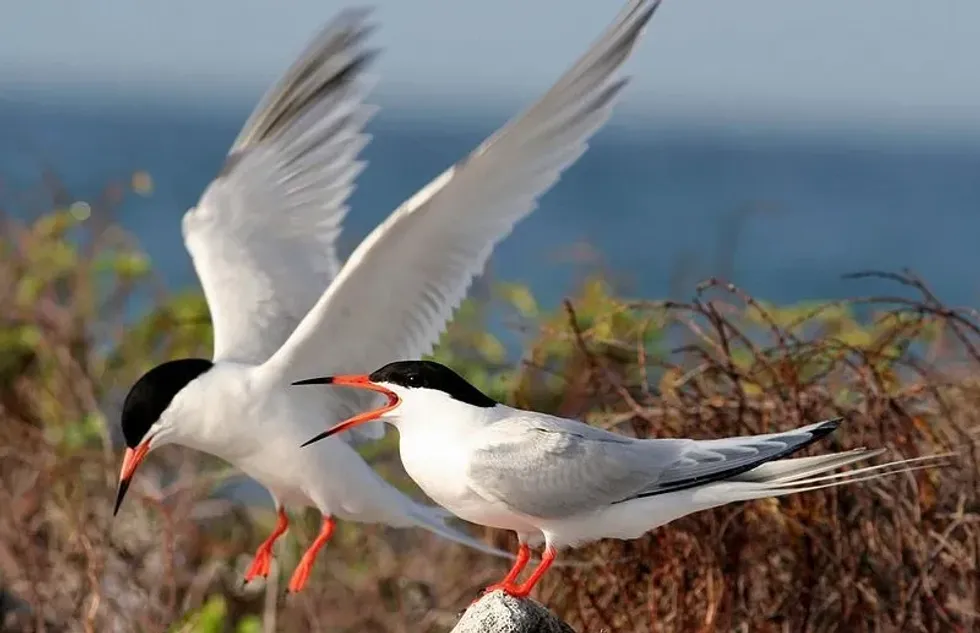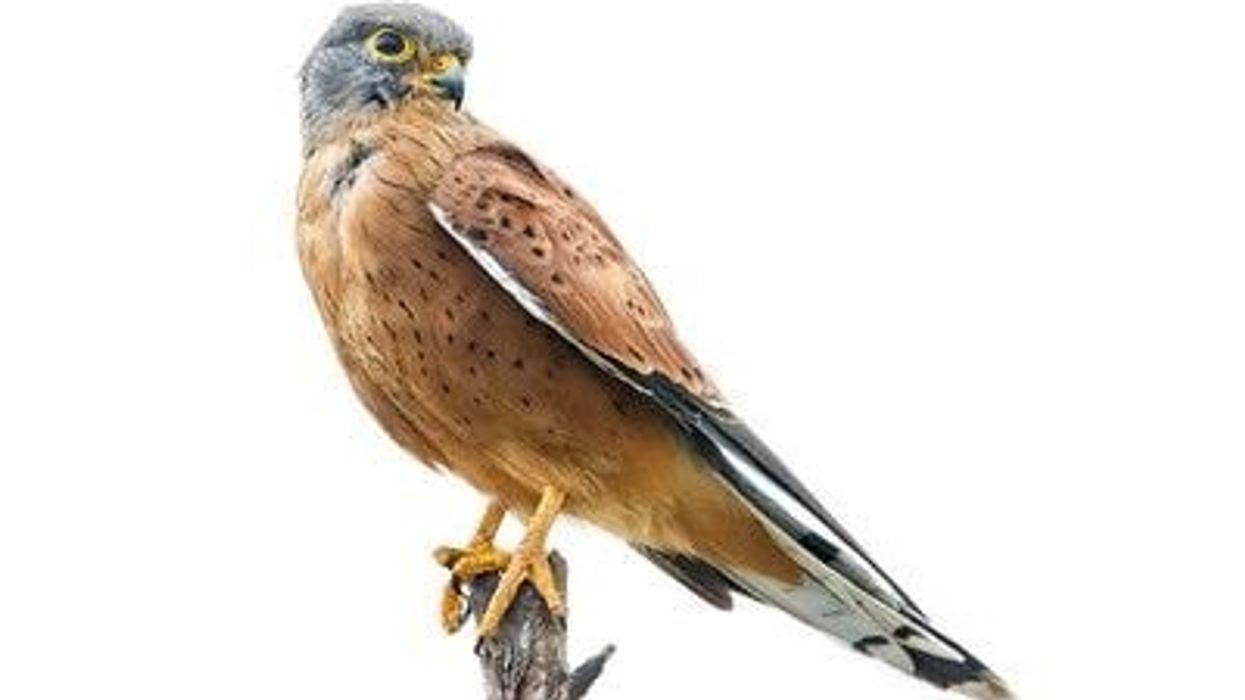The Roseate Tern, Sterna dougallii, is the most attractive of all tern species. Their name 'Roseate' comes from this stunning bird's breeding plumage, which has a slightly pink breast. These shorebirds belong to the family Laridae and the genus Sterna.
They have a further four subspecies distinguished based on the color of the bill and size. The North American subspecies are split into two groups with one in Nova Scotia and the other in the Caribbean. They have a magnificent appearance with an amazing physique, almost similar to that of gulls.
They have narrow black-colored bills as well as black caps on their heads. They have white forked tails.
They're carnivorous species whose diet mainly comprises fish. The Roseate tern reproduction takes place along islands and shores in colonies. The bills and feathers of these terns go through certain changes during the breeding season.
Their conservation status is Least Concern as per the IUCN's Red List. However, it's endangered in some areas. Keep reading to get to know this elegant bird's appearance, reproduction, habitat, and many more captivating facts.
If you find these facts captivating, then you can also read our facts about frigatebirds and southern cassowary.
Roseate Tern Interesting Facts
What type of animal is a Roseate Tern?
The Roseate Tern is a bird that is a member of the Laridae family. It's a carnivorous bird that feeds upon small fish like sand lance and herring, crustaceans, insects (rarely), and mollusks. This species is widespread with a stable population.
What class of animal does a Roseate Tern belong to?
The Roseate Tern, Sterna dougallii, is a member of the class of Aves. These species are migratory and migrate to long distances.
They migrate towards the south in the winter from the northeastern United States to Trinidad and South America, as well as from Columbia's Pacific Coast to the eastern part of Brazil. Roseate populations in Europe typically move to the south and west of Africa.
How many Roseate Terns are there in the world?
The worldwide population of the Roseate Terns is expected to be 200,000-220,000 birds. Their European Population comprises 2,300-2,900 pairs. Their population in North America is about 24,000.
Where does a Roseate Tern live?
The Roseate tern habitat ranges from Canada, Nova Scotia to New York. It can also be spotted breeding in the Florida Keys.
It spends the winter near the South American shores. It can also be spotted in Europe, Western Australia, the Indian Ocean, and the Caribbean. You can easily spot these magnificent birds breeding on the northeastern coasts of North America.
What is a Roseate Tern's habitat?
The species constructs its nest near scarce vegetation upon pebbles, sand, or shell beaches over islands. The Roseate terns spend their winter season alongside coasts or offshore.
Who does Roseate Tern live with?
It's a seabird that breeds in colonies. It eats alone or in small flocks of birds. They like to mate with one partner and spend the rest of their lives with them (monogamous).
How long does a Roseate Tern live?
The average life expectancy of the Roseate Terns bird is eight years. The oldest bird of this species ever recorded was of age 25.8 years.
How do they reproduce?
This lovely bird only has one companion for the rest of its life. Under heavy plants and rocks, this colonially breeding shorebird builds a hollow nest hidden from predators in the breeding season on small islands or coasts.
The North American Roseate terns nest in colonies accompanied by the common terns. Their breeding starts at the end of April.
In late May, they arrive at breeding places that range from Canada, Nova Scotia to New York. Roseate terns also nest on the rooftops in the Florida Keys. This species' flocks soar high and glide down together during the breeding period as a part of the display.
The female lays one to two eggs in the nest and is sometimes nourished by the male. For 21-26 days, both parents incubate their eggs.
After a few days, the chicks may shift to some other place. They start flying for the first time 27-30 days after hatching.
What is their conservation status?
The Conservation Status of these terns is Least Concern as per the IUCN's Red List. The Roseate Tern population is stable and increasing overall. However, back in 1987, it was classified as an Endangered species on the Federal Endangered Species List as its population saw a major drop in New Hampshire, a northeastern state in North America.
Roseate Tern Fun Facts
What do Roseate Terns look like?
Roseate terns are medium-sized seabirds that resemble gulls. They have a gracefully thin physique. These terns have a black cap on top of their heads with a narrow black bill. They've got a forked white tail.
Their backs are silver-gray with a pinkish belly and a white-colored breast. Their tail gets shorter, with black-colored feet and legs during the mating period. Their name 'Roseate' comes from their breeding plumage, which has a pink-colored breast.
How cute are they?
These birds are very cute with their stunning plumage that is cotton-white with a black cap on their head. They look quite dapper in appearance.
How do they communicate?
the Roseate tern makes a 'chew-ik' noise normally but when startles, it creates a 'kraak' noise. They're quite orally expressive birds when on mating grounds.
How big is a Roseate Tern?
Roseate tern ranges from 12.9-14.1 in (33-36 cm) in length. Roseate Tern wingspan range is 29-32 in (73-81 cm). They're about half the size of European herring gulls.
How fast can a Roseate Tern move?
The speed of the Roseate Tern is not known. However, these birds can fly at a remarkable speed. It makes quick wingbeats and flies buoyantly and swiftly, often catching fish in flight.
How much does a Roseate Tern weigh?
The weight of these birds ranges between 3.10-4.9 oz (90-140 g). Their average weight is 4 oz (113 g)
What are the male and female names of the species?
There is no specific name for the male or female birds of this species.
What would you call a baby Roseate Tern?
Babies of these terns can be referred to as a chick, fledglings, or hatchlings.
What do they eat?
Their diet comprises fish mainly. They look for food individually as well as in flocks. They feed upon mollusks, crustaceans, insects (rarely) as well as little fish like herring and sand lance in North America. The major predators that feed on them or their eggs are big gulls, foxes, brown rats, and, peregrines.
Are they poisonous?
No, these birds are not poisonous.
Would they make a good pet?
These tern species are endangered at some locations and are considered wild birds. It's not suitable to keep them as pets.
Did you know...
The name of their genus originates from the Old English words 'stearn' and ‘tern’, whereas 'dougallii' originates from Dr. Peter McDougall, a Scottish collector.
Why is the Roseate Tern endangered?
They're endangered in the northeast due to hunting for their feathers, predation as well as egg collection done by humans.
Roseate Tern vs Common Tern
The Roseate tern species have longer bills and longer tails than the common terns. The common terns have dark undersides of their wings. The Roseate terns have pale upper parts whereas common terns have dark ones.
Here at Kidadl, we have carefully created lots of interesting family-friendly animal facts for everyone to discover! Learn more about some other birds from our toco toucan fun facts and seaside sparrow surprising facts.
You can even occupy yourself at home by coloring in one of our free printable Roseate tern coloring pages.










